People who were born in the last decade have grown up bombarded with statements confirming that every year is warmer than the previous one. In a world that has become warmer and warmer, the poles of the Earth are melting, posing numerous threats to all life on Earth. With glaciers and permafrost melting, humans have gradually opened nature's Pandora's box.
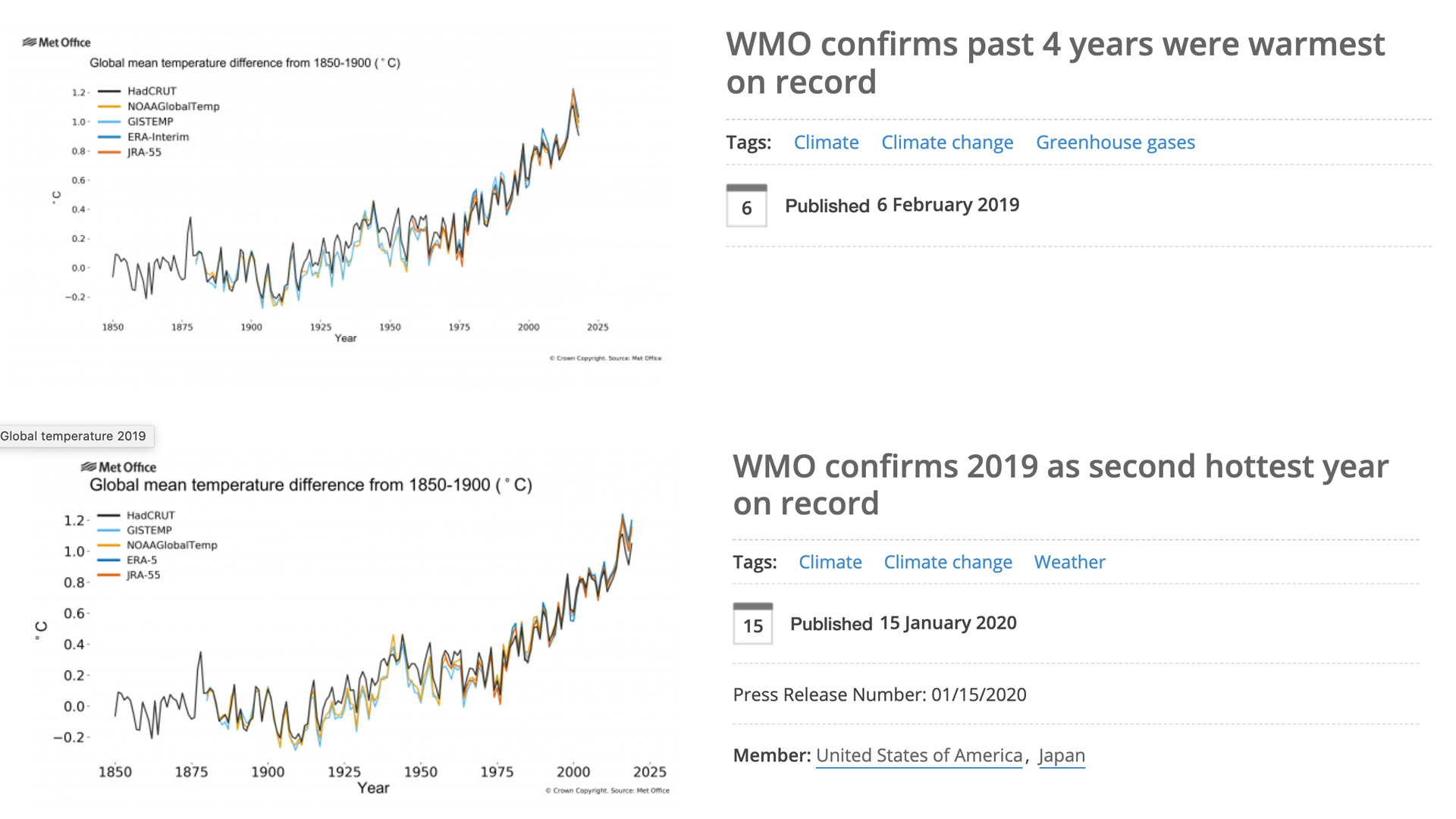
Screenshot from the official website of The World Meteorological Organization.
Screenshot from the official website of The World Meteorological Organization.
The Arctic region of Earth is a large frozen land that's home to mesmerizing glaciers and incredible arctic creatures. This unique ecosystem is also characterized by permafrost, the permanently frozen layer of soil. In the Northern Hemisphere today, 24 percent of the ice-free land area, equivalent to 19 million square kilometers, is more or less influenced by permafrost. Most of them are found in Siberia, northern Canada, Alaska, U.S. and Greenland.
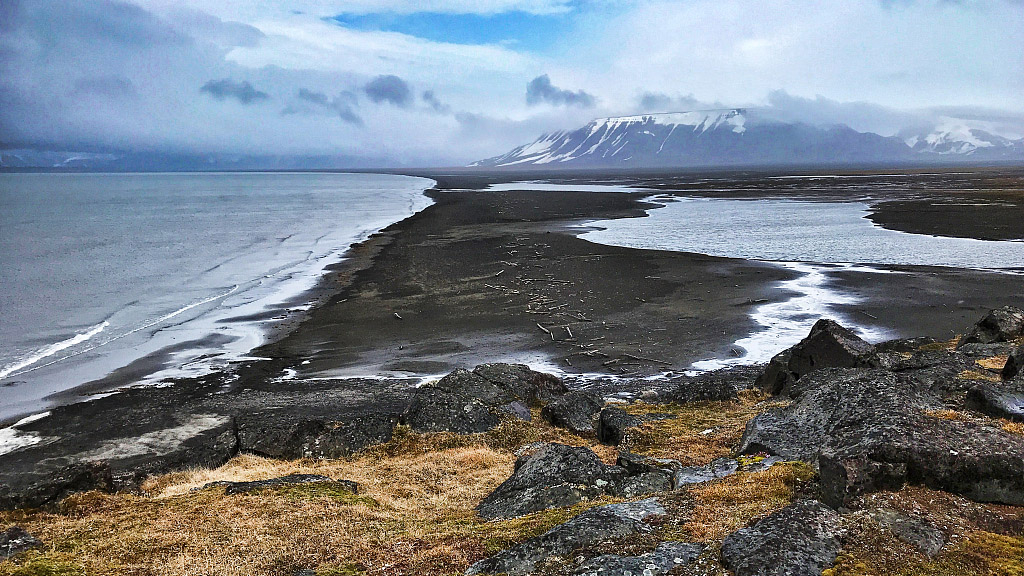
Permafrost in Svalbard, Norway, where the global seed vault is located. /VCG
Permafrost in Svalbard, Norway, where the global seed vault is located. /VCG
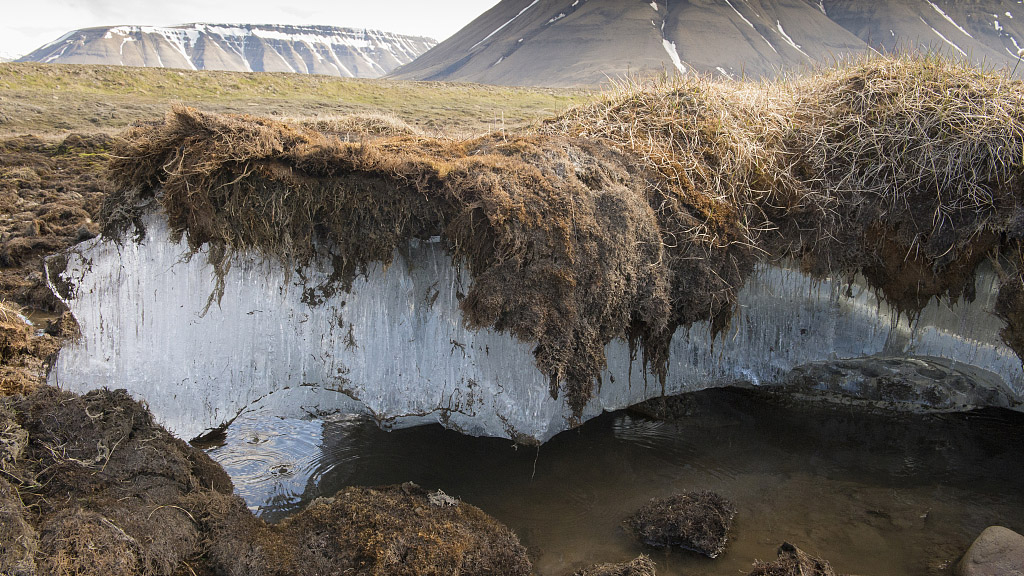
Permafrost in Svalbard, Norway, where the global seed vault is located. /VCG
Permafrost in Svalbard, Norway, where the global seed vault is located. /VCG
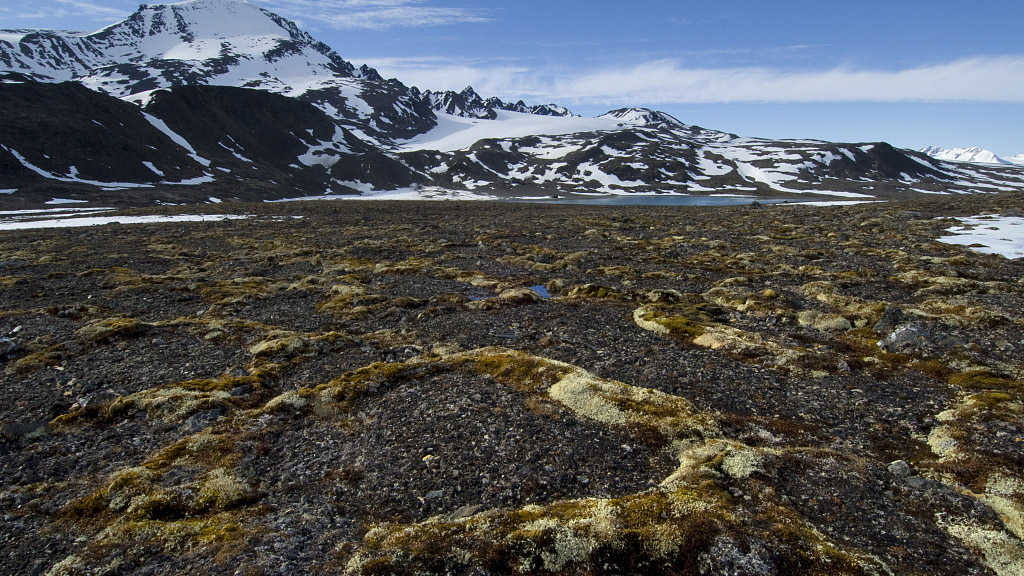
Permafrost in Svalbard, Norway, where the global seed vault is located. /VCG
Permafrost in Svalbard, Norway, where the global seed vault is located. /VCG
With more than a millennia's worth of plants and animals decomposed and entombed in this frozen purgatory, what happens when the permafrost becomes not so permanent?
Zombie viruses in the thawing permafrost
Viruses can be preserved for a very long time in the permafrost.
Discovered by a team of researchers from the National Center of Scientific Research (CNRS) at the University of Aix-Marseille in the frozen land of extreme northeastern Siberia, the Pithovirus sibericum is the biggest virus that has ever been found. The virus has stayed dormant in the Siberian permafrost for at least 30,000 years, but after it thawed it became infectious once again, according to the corresponding study published in the Proceedings of the National Academy of Sciences (PNAS) in 2014.
This ancient virus was discovered 30 meters underground in the permafrost, and woke up in the laboratory after 30,000 years of sleep. The French scientists said although tests found that the giant virus can attack some single-celled organisms, it poses no danger to humans or animals. But other viruses could be unleashed as the ground becomes exposed.
Professor Jean-Michel Claverie, one of the authors of the study, said the study "suggests that the thawing of permafrost either from global warming or industrial exploitation of circumpolar regions might not be exempt from future threats to human or animal health."
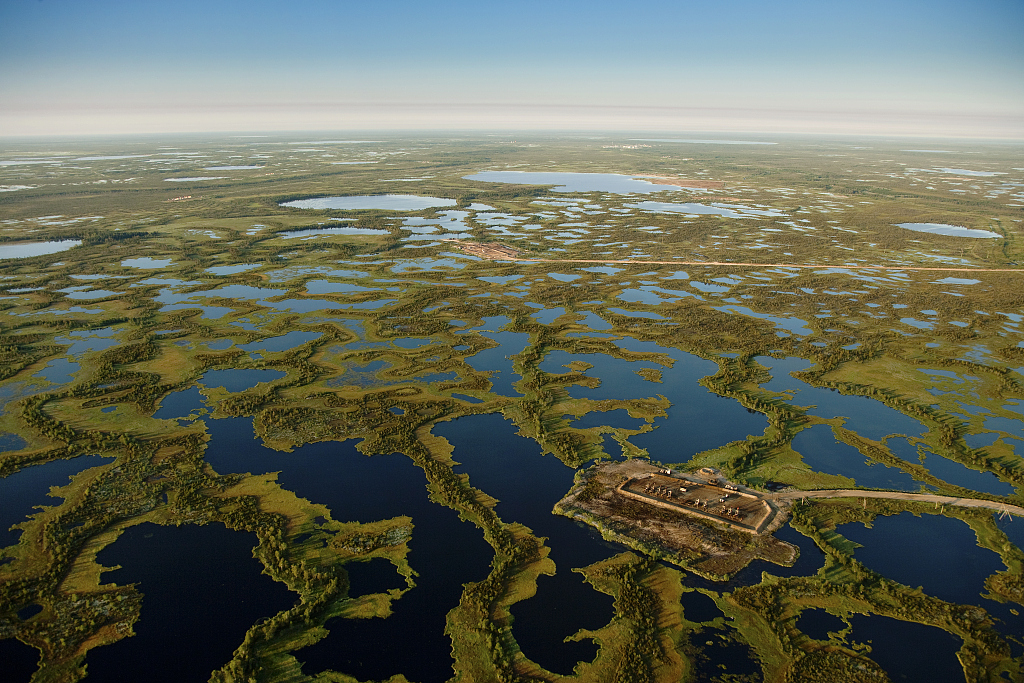
Oil drilling near Surgut in Siberia Russia. Drilling deep wells for oil and gas can thaw permafrost. If the permafrost thaws, the wells can collapse. /VCG
Oil drilling near Surgut in Siberia Russia. Drilling deep wells for oil and gas can thaw permafrost. If the permafrost thaws, the wells can collapse. /VCG
The thawing of world's largest carbon sink
Decomposition of dead animals and plants release carbon dioxide, methane, and other global warming gases into the air. The freezing temperature of permafrost effectively halts that process and preserves them within. However, when it thaws, the microbial decomposition of those organic materials – and the release of greenhouse gases starts anew.
From human bodies to the bodies of woolly mammoths, permafrost is one of earth's great stores of global warming gases. An estimated 1,400 gigatons of carbon are frozen in Arctic permafrost, that is about four times more than the total emission since the Industrial Revolution, and nearly twice as much as what the atmosphere currently contained.
According to a recent report, a two degrees Celsius increase in temperature – expected by the end of the century – will result in a loss of about 40 percent of the world's permafrost by 2100.
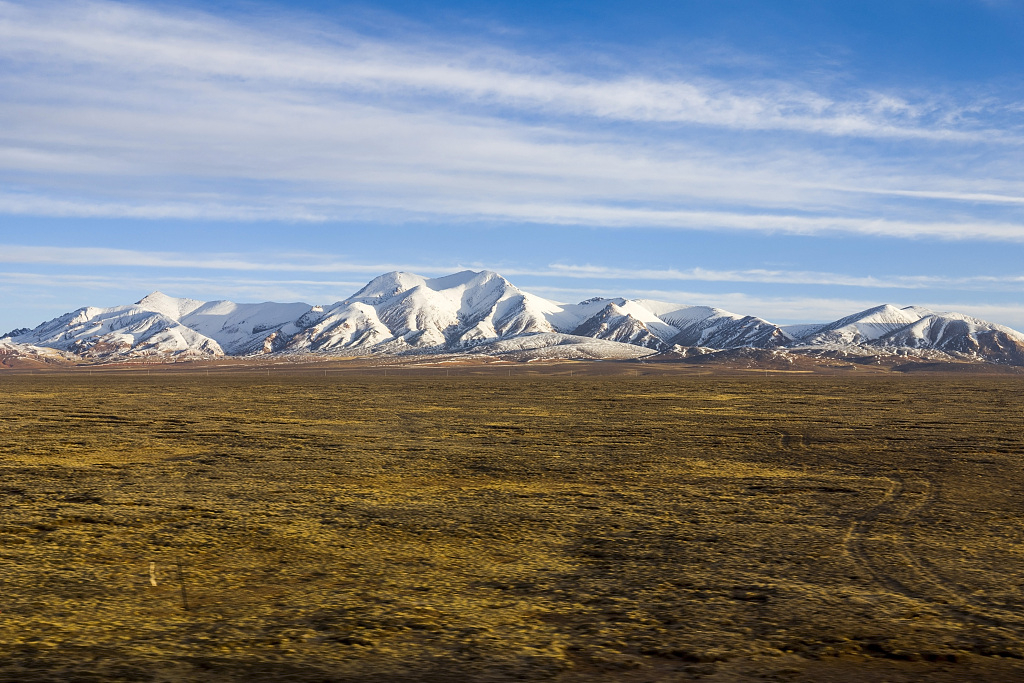
Permafrost on the Qinghai-Tibetan Plateau in southwest China is the largest alpine permafrost in the world. /VCG
Permafrost on the Qinghai-Tibetan Plateau in southwest China is the largest alpine permafrost in the world. /VCG
Crumbling infrastructures
In Alaska, thawing permafrost is turning roads into roller coasters.
When water freezes underground, it expands and the ground swells. But when it thaws, the ground contracts, which can make the land crack or cave in.
There are about 35 million people living in permafrost zones. As the solid ground softens, the infrastructure there grows increasingly unstable.
Estimated costs of repairing public infrastructure like roads, train lines, buildings, and airports damaged by thawing permafrost and other climate-related factors in Alaska is estimated at up to 5.5 billion U.S. dollars by the end of this century.
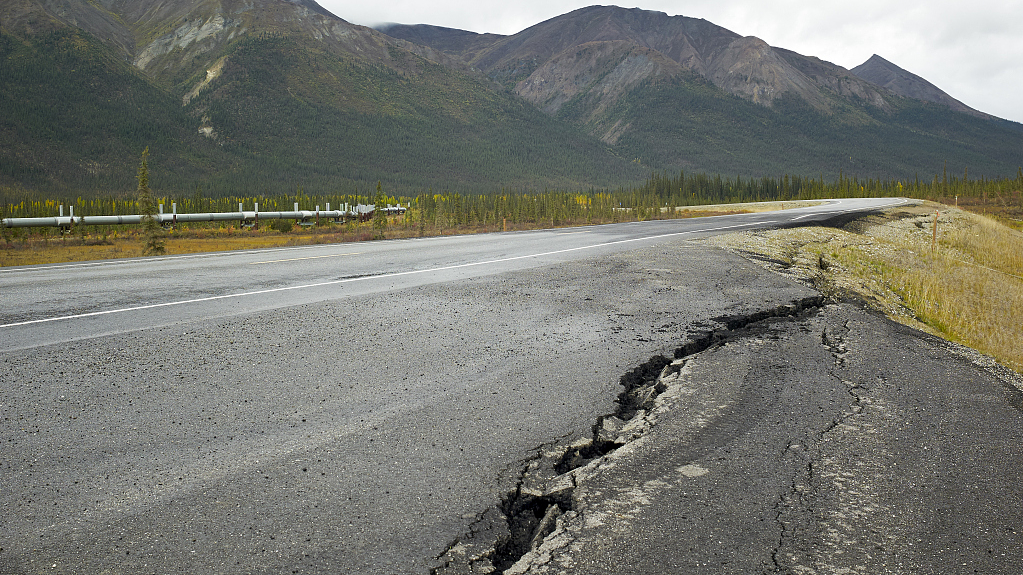
Alaska, U.S., the road is damaged as a result of permafrost thawing. /VCG
Alaska, U.S., the road is damaged as a result of permafrost thawing. /VCG
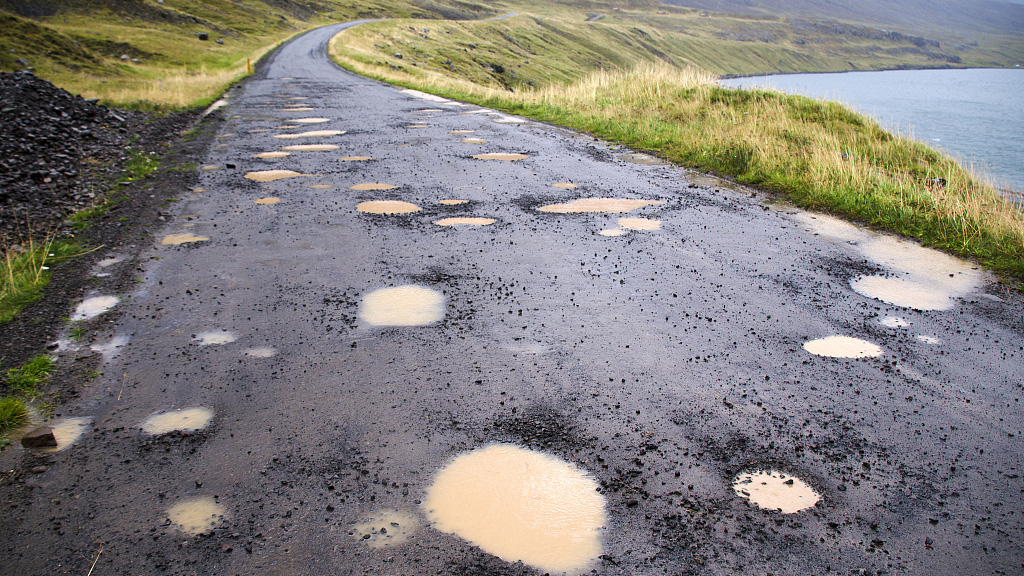
Potholes in Iceland. Potholes are examples of how thawed ice in the ground could cause the land to cave in. /VCG
Potholes in Iceland. Potholes are examples of how thawed ice in the ground could cause the land to cave in. /VCG
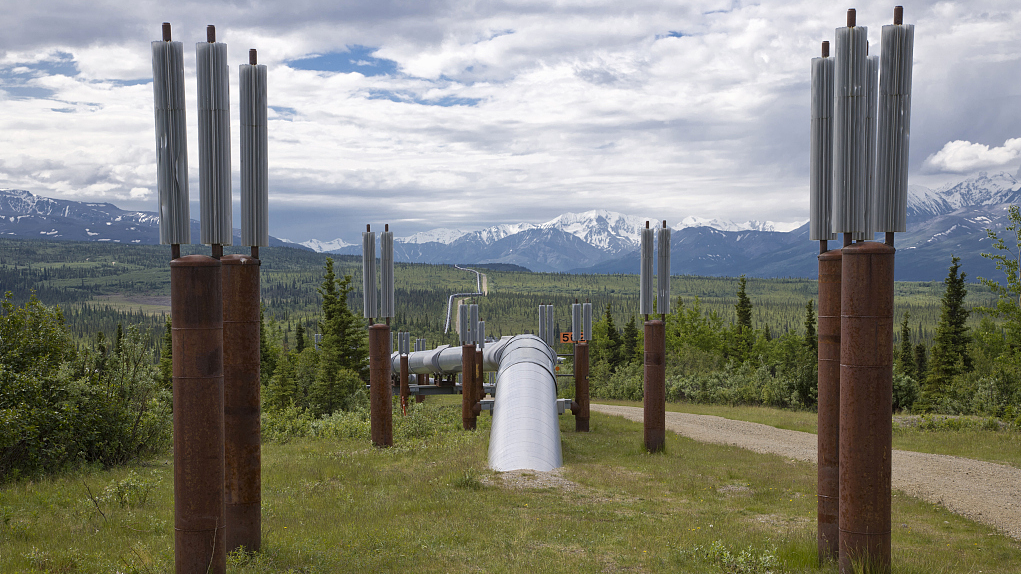
Thermosyphons in Alaska. It is a method of passive heat exchange, based on natural convection, which circulates a fluid without the necessity of a mechanical pump. /VCG
Thermosyphons in Alaska. It is a method of passive heat exchange, based on natural convection, which circulates a fluid without the necessity of a mechanical pump. /VCG
For most of the world in the tropic-temperate zone, the permanently frozen land of tundra and permafrost seem far away. However, no harm is done in one day.
The continuous emission we produce on a daily basis is increasing global warming and the daily choices we make to reduce our carbon footprint could contribute collectively to slowing down climate change.
(Cover: the frozen land of the arctic. /VCG)
(If you want to contribute and have specific expertise, please contact us at nature@cgtn.com.)